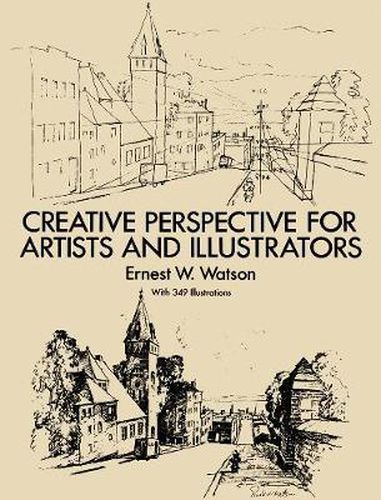Readings Newsletter
Become a Readings Member to make your shopping experience even easier.
Sign in or sign up for free!
You’re not far away from qualifying for FREE standard shipping within Australia
You’ve qualified for FREE standard shipping within Australia
The cart is loading…






In this thought-provoking practical guide, a noted artist and educator demonstrates that learning to violate the rules of perspective (profitably) is as important for the practicing artist as learning the principles of perspective themselves. Only in this way can students free themselves from the constraints of tradition and find their own imaginative paths. However, it is vital that students first have a solid grasp of classical perspective before they can think about adapting it creatively.In presenting the principles of perspective drawing, Mr. Watson devotes a chapter each to step-by-step discussions of such topics as the picture plane, foreshortening and convergence, the circle, the cone, three-point perspective, universal perspective, figures in perspective, and much more. To illustrate his points he offers expert analysis of the works of such leading illustrators as John Atherton, V. Bobri, R. M. Chapin, Jr., Albert Dorne, Robert Fawcett, Constantin Guys, W. N. Hudson, Carl Roberts, Ben Stahl, and Aldren A. Watson, as well as drawings by Pieter de Hooch and Paul Cezanne. The result is a ground-breaking study that artists, illustrators, and draftsmen will find invaluable in learning to create works with convincing perspective.Ernest W. Watson taught at Pratt Institute for over 20 years, co-founded and served as editor-in-chief of the magazine American Artist, and co-founded the prestigious art publishing house of Watson-Guptill.
$9.00 standard shipping within Australia
FREE standard shipping within Australia for orders over $100.00
Express & International shipping calculated at checkout
In this thought-provoking practical guide, a noted artist and educator demonstrates that learning to violate the rules of perspective (profitably) is as important for the practicing artist as learning the principles of perspective themselves. Only in this way can students free themselves from the constraints of tradition and find their own imaginative paths. However, it is vital that students first have a solid grasp of classical perspective before they can think about adapting it creatively.In presenting the principles of perspective drawing, Mr. Watson devotes a chapter each to step-by-step discussions of such topics as the picture plane, foreshortening and convergence, the circle, the cone, three-point perspective, universal perspective, figures in perspective, and much more. To illustrate his points he offers expert analysis of the works of such leading illustrators as John Atherton, V. Bobri, R. M. Chapin, Jr., Albert Dorne, Robert Fawcett, Constantin Guys, W. N. Hudson, Carl Roberts, Ben Stahl, and Aldren A. Watson, as well as drawings by Pieter de Hooch and Paul Cezanne. The result is a ground-breaking study that artists, illustrators, and draftsmen will find invaluable in learning to create works with convincing perspective.Ernest W. Watson taught at Pratt Institute for over 20 years, co-founded and served as editor-in-chief of the magazine American Artist, and co-founded the prestigious art publishing house of Watson-Guptill.